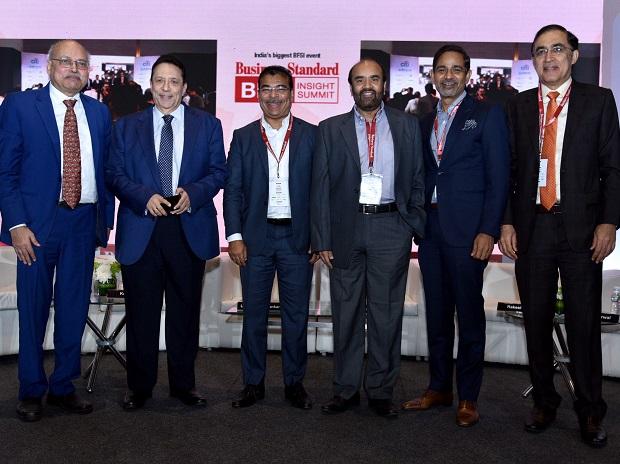[ad_1]
The non-banking financial company (NBFC) sector has been under the scanner since the 2018 Infrastructure Leasing & Financial Services (IL&FS) crisis when the industry lost some of the market share to banks in recent years. But the industry’s chief executives remain confident of the long-term growth potential of NBFCs in India, given their specialised lending on the asset side, last-mile reach, and a well-capitalised balance sheet.
“Over the years, NBFCs have faced many crises. Thanks to a strong regulatory response, they have always come back stronger. Even in 2018, none of the major NBFCs folded up except for IL&FS. The industry plays an important role in the economy and is the primary source of lending in many segments where banks are reluctant to lend,” said Keki Mistry, vice-chairman (V-C) and chief executive officer (CEO), Housing Development and Finance Corporation (HDFC) — the country’s biggest non-banking lender.
Mistry was speaking at a panel discussion on NBFCs at Business Standard BFSI Insight Summit 2022 in Mumbai on Wednesday.
The other speakers at the NBFC panel discussion titled Is Becoming A Bank Still A Dream For NBFCs? included Umesh G Revankar, executive V-C, Shriram Transport Finance Company (STFC); Ramesh Iyer, V-C and managing director (MD), Mahindra Finance; Rakesh Singh, MD and CEO, Aditya Birla Finance; and Rajiv Sabharwal, MD and CEO, Tata Capital.
The 2018 IL&FS crisis and the resultant liquidity crunch faced by some NBFCs also highlighted the need for big players in the industry to secure banking licences from the Reserve Bank of India (RBI).
The industry executives, however, discounted the need for a banking licence, given the specialised nature of lending by NBFCs.
“Most NBFCs specialise and finance a particular asset class — be it housing, commercial vehicle or gold loan. NBFCs play a crucial role in the growth and development of these sectors. This kind of specialisation is not possible under commercial banking,” said Revankar of STFC — the country’s top financier of commercial vehicle purchases.
The industry executive conceded that NBFCs have certain disadvantages compared to banks on the liability side. While they do not have access to demand deposits like commercial banks, this is not an impediment to the industry’s growth.
“NBFCs have been built for customers. NBFCs have always bounced back stronger from every crisis. It would be wrong to think any of us would want to become a bank only because we don’t have a future,” said Iyer of Mahindra Finance.
According to him, there is a place for both NBFCs in the system.
“If banks start lending to NBFC customers, they will face the problem of recovery. If we start lending to a bank customer, it will create a problem of margins for us.”
Other CEOs highlighted the last-mile reach that an NBFC provides.
“We are the last-mile lender. In many ways, we work together with banks to provide institutional credit to customers who would otherwise go unbanked. There is still a lot of room for us to grow. NBFCs can easily grow to a quarter of the entire bank credit,” said Singh of Aditya Birla Finance.
The industry executives also debunked the theory of any financial stress in the industry.
“Notwithstanding a series of financial stress and crises faced by our industry in recent years, more banks have been on the verge of death than NBFCs. I feel most business entities fail because of a lack of governance rather than financial stress or other operational issues,” said Sabharwal of Tata Capital.
The industry, however, wants the regulator to devise a refinancing window for NBFCs to help them tide over the occasional liquidity issues faced by them.
“Banks can turn to the RBI in times of financial crisis. NBFCs have no such window. We need a refinancing mechanism and it will give us a lot of confidence,” said Singh of Aditya Birla Finance.
The industry executives also said that they see technology and financial technology (fintech) companies as an opportunity rather than a competitor.
“Technology and fintech are enablers rather than competitors or disruptors. We can use them to expand our reach and bring in new customers,” observed Revankar of STFC.
[ad_2]
Source link



